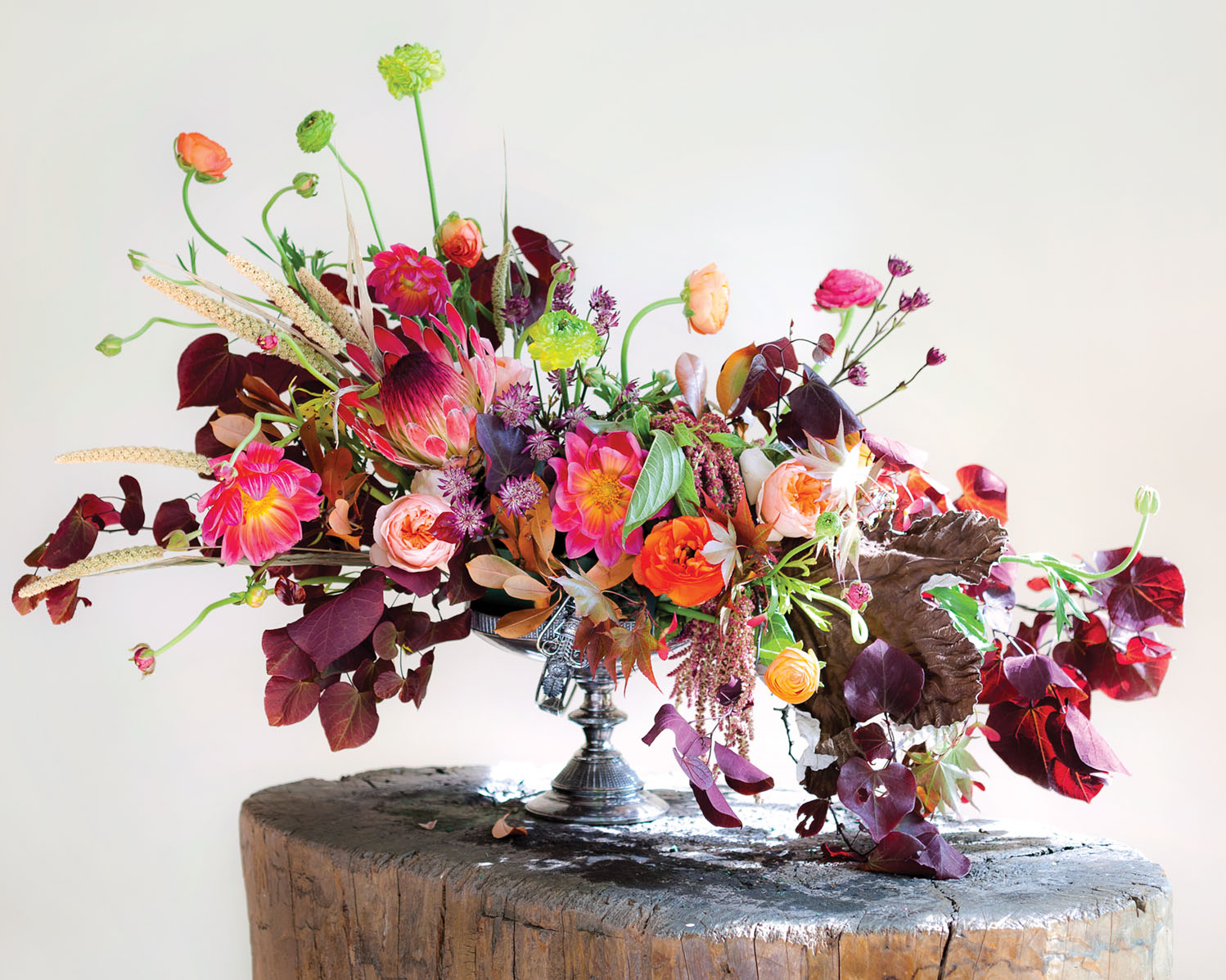
As we look forward to fall, we’re looking back to a favorite autumn-inspired arrangement from the Flower magazine archives. Atlanta-based event designer Joy Thigpen created this compote design for the cover of our Fall 2013 issue using naturally colorful foliage—branches foraged from a plum tree and Japanese maple—in anticipation of the change of seasons.
“I thought it would be fun to play with ‘fall colors’ and use a brighter, more colorful palette for the season. Usually, I like things that are subtle, but sometimes it’s fun to turn up the volume and just play a little,” Joy said.
Her vibrant creation still captures our fancy, but if we were making it today, we would make one adjustment. In recent years, Flower has stopped using floral foam due to environmental concerns. So although you will see floral foam in the step-by-step photos for this design, we recommend the following makeover for your floral mechanics, those underlying components that provide structure for an arrangement.
Floral Mechanics Makeover
Vessel: Joy used a footed compote in her design. You can get a similar look with any shallow bowl that holds enough water to keep flowers fresh.
Pin frog (also known as a kenzan): This time-honored floral-arranging tool provides a place to anchor the branches in the first steps of this design (without it, the branches can easily spin out of place). Secure the frog to the bottom of your vessel using floral putty. Floral Genius makes some popular options for pin frogs.
Chicken wire: Wad up a large piece into a mound to fit inside your vessel (overlap the wire about three times). This method works even with shallow vessels. See example.
Florist tape: Use it to secure the chicken wire to the vessel. Then add water.
Holly Pillow: Streamline your mechanics with this creation by floral designer Holly Chapple; it can take the place of all the components above. The reusable floral cage rests in your container and even allows you to transfer an arrangement to a different vessel. See demonstration.
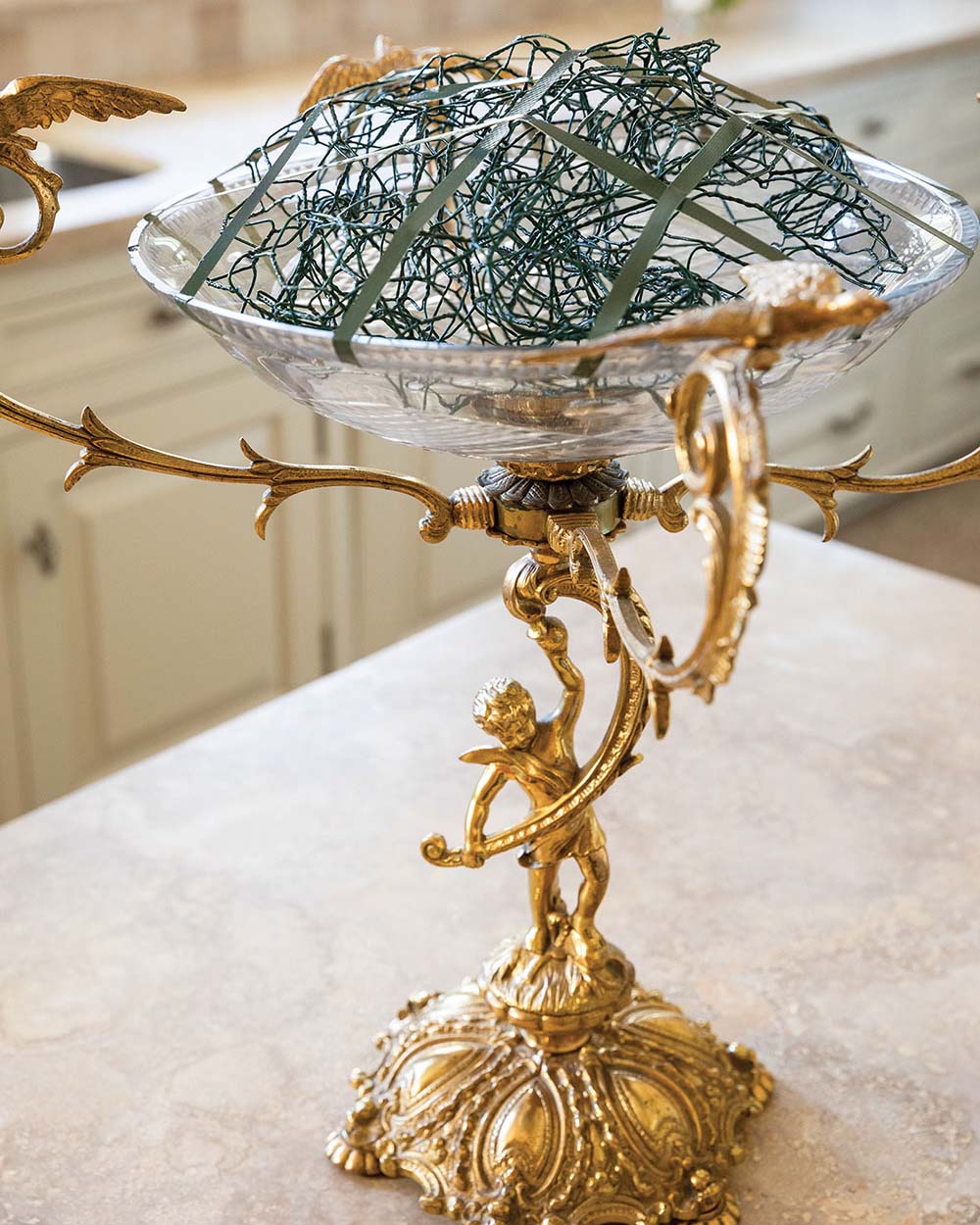
Materials
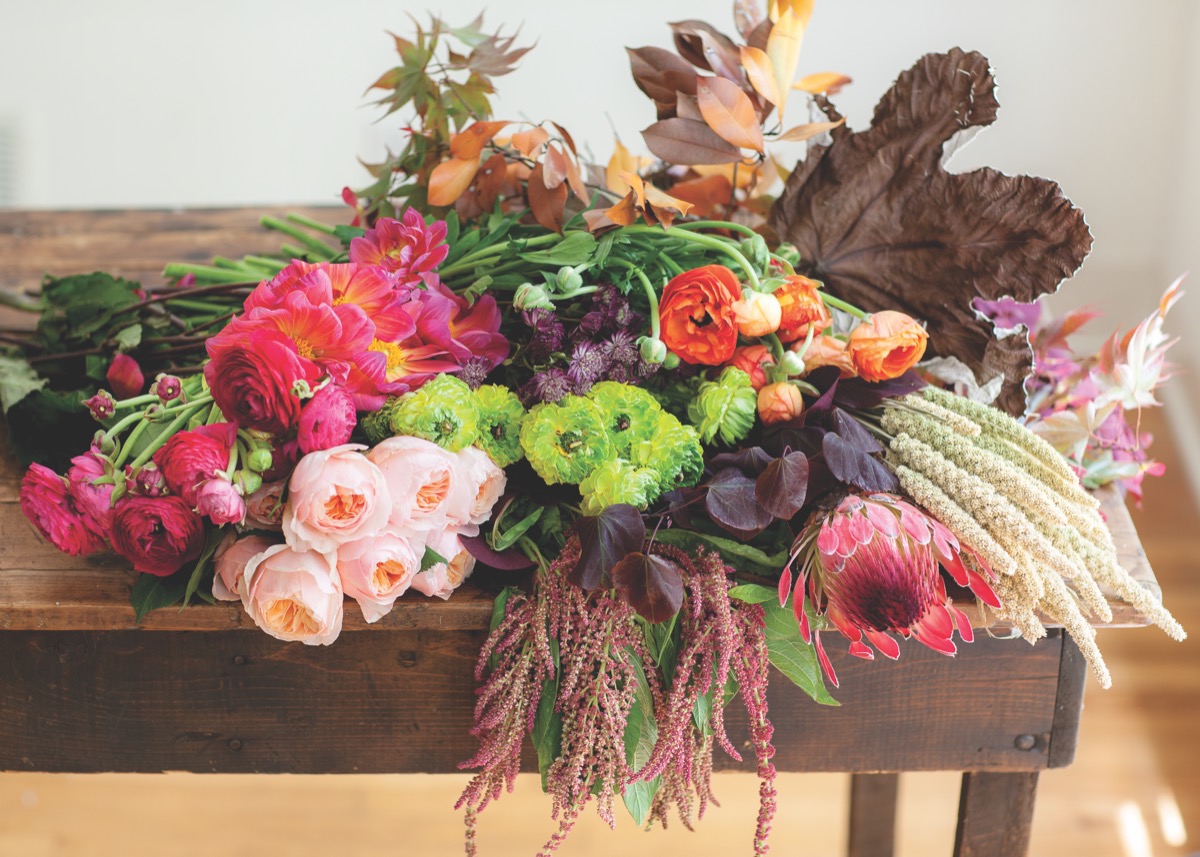
- Plum branches
- Foraged branches with yellowed or browned leaves
- Hanging pink amaranthus
- David Austin ‘Juliet’ roses
- King protea
- Bright pink and yellow dahlias
- Fuchsia, orange, and lime-green Italian ranunculus
- Purple astrantia
- Japanese maple branches
- Millet
Instructions
1
Start with the long plum branches to create shape and movement. Don’t be afraid to trim them down to a more workable size. Using the natural shape of the branches, place them so that they begin to relate to one another as a group. I ended up using the plum branches to create an S-curve across the vessel.

2
Next, add some of the foraged branches with yellow and brown leaves to cover the mechanics and provide a base for the arrangement. (See Floral Mechanics Makeover for sustainable alternatives to floral foam.)
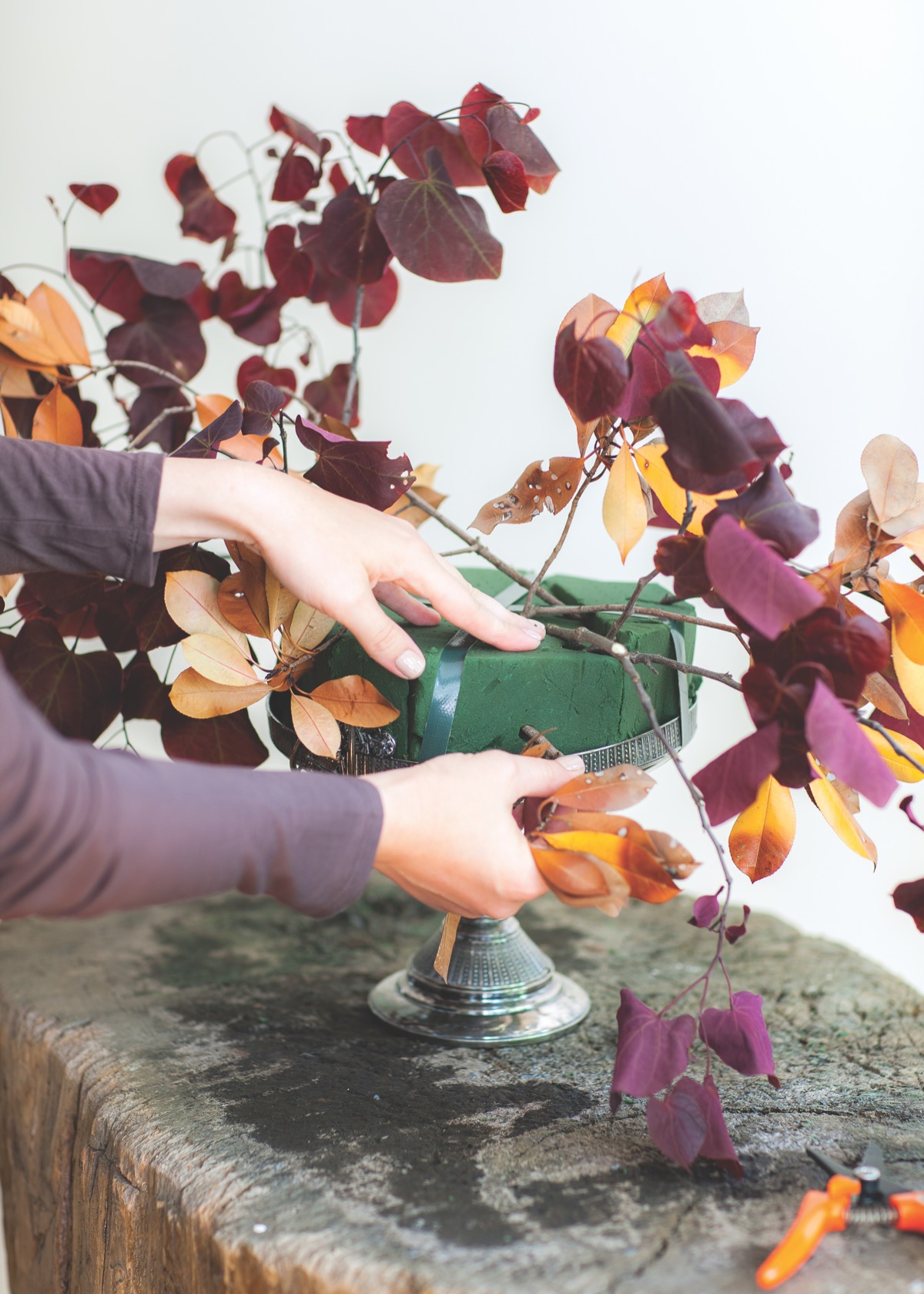
3
Cut off the long stalks of the amaranthus. Strip off most of the green leaves because they wilt and wither so quickly. Place the whole handful of amaranthus stems in the arrangement as a group. Angle the stems up slightly so they spill out gracefully.

4
Trim a few roses down to varying lengths. They can be pretty thorny, so if you press the thorns sideways you can pop them right off. Place roses in arrangement.
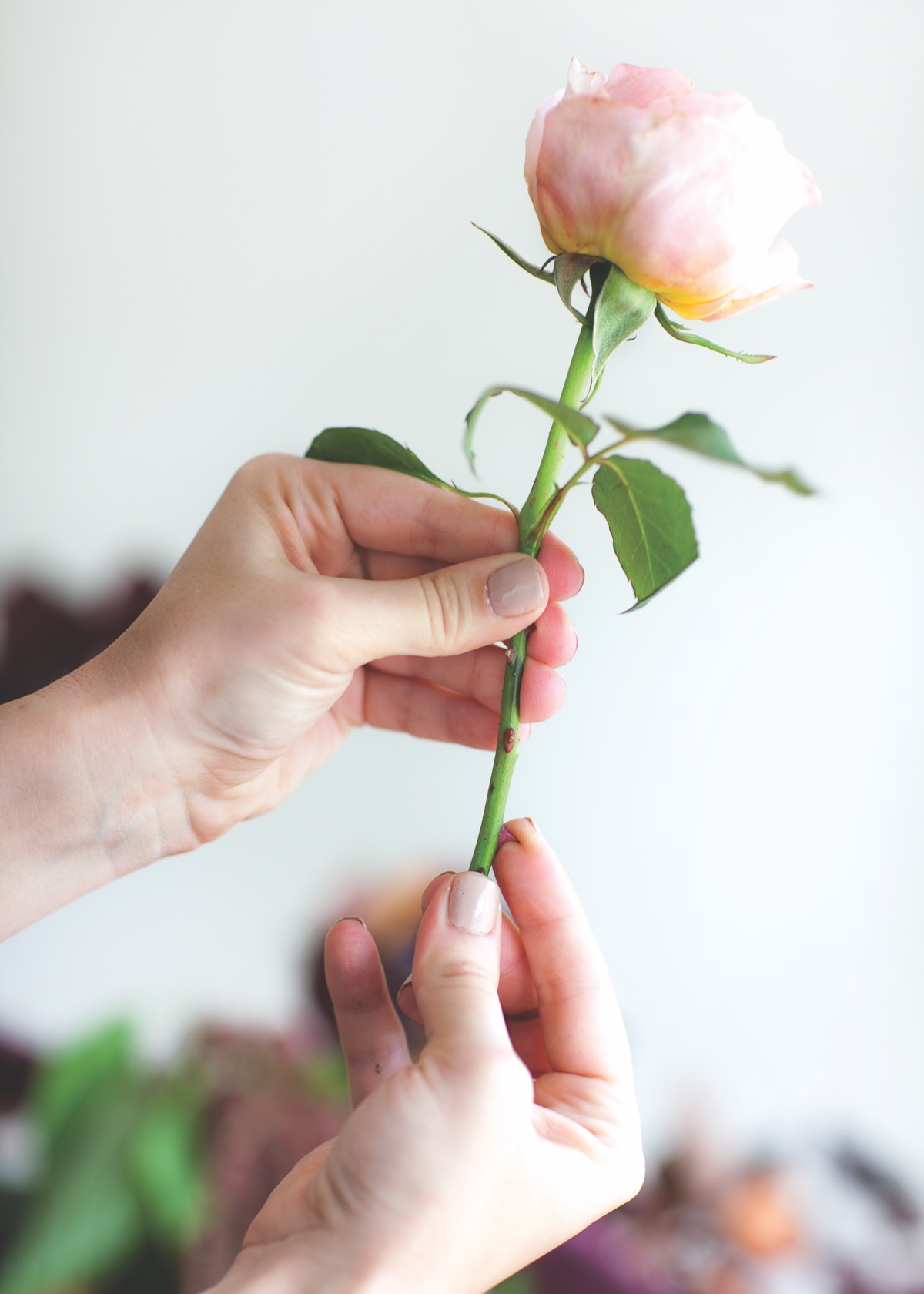
5
Cut the protea down and place it low into the arrangement. It has a lot of visual and physical weight, and your arrangement needs to support that.
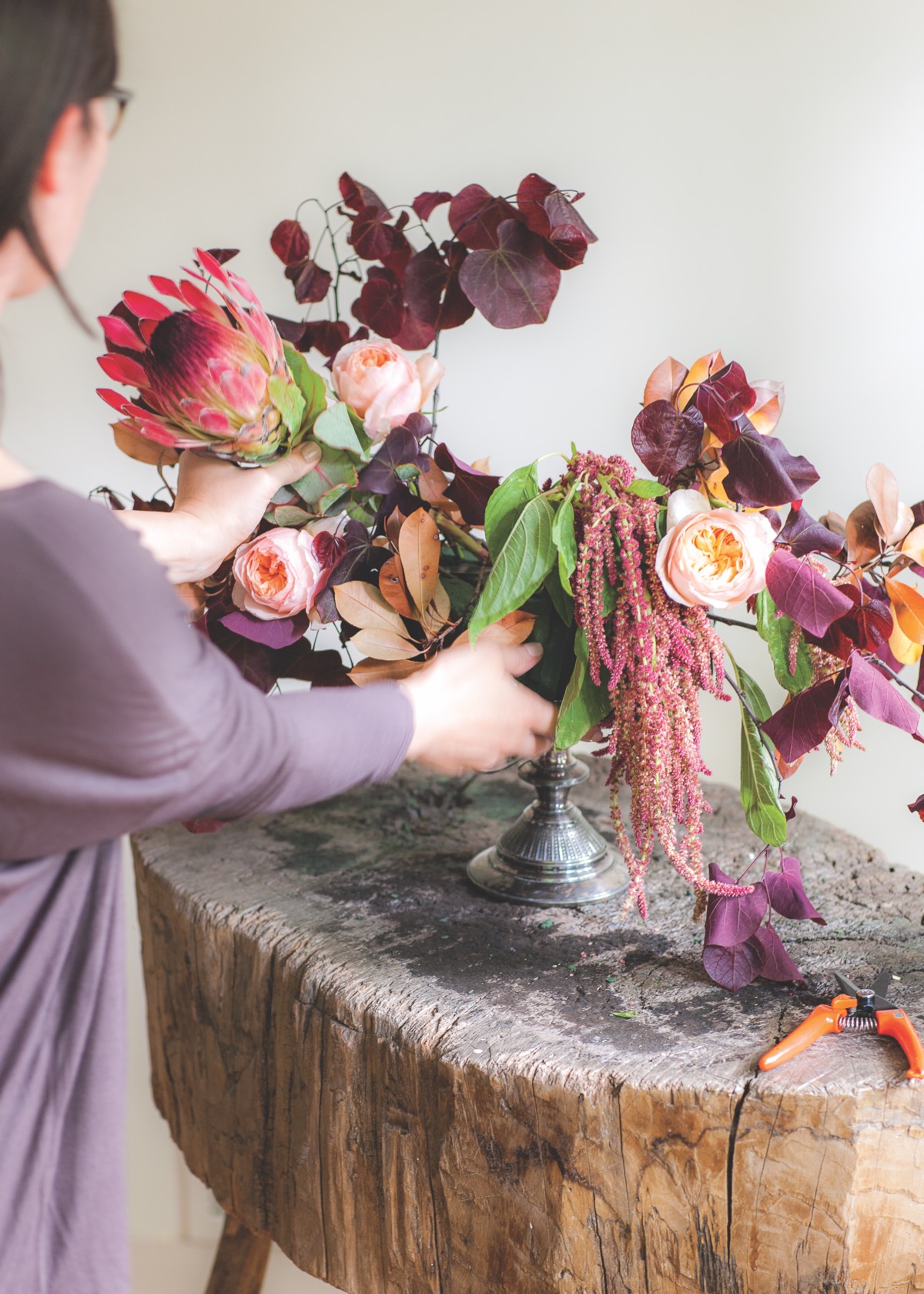
6
Now add the dahlias. Sometimes I hold a stem up to the vessel and try it in a few places before deciding how to trim it. Since my dahlias were so big and bright, I made them a focal point.

7
To add more texture and interest, add fuchsia and orange ranunculus, astrantia, Japanese maple, and millet.

8
I loved the texture and color of this giant dried leaf, but its little stem was too short for where I wanted it to go. No problem! Since it doesn’t need any water, just take a little twig that you trimmed off another branch earlier and wire and tape it to the stem to make an extension.
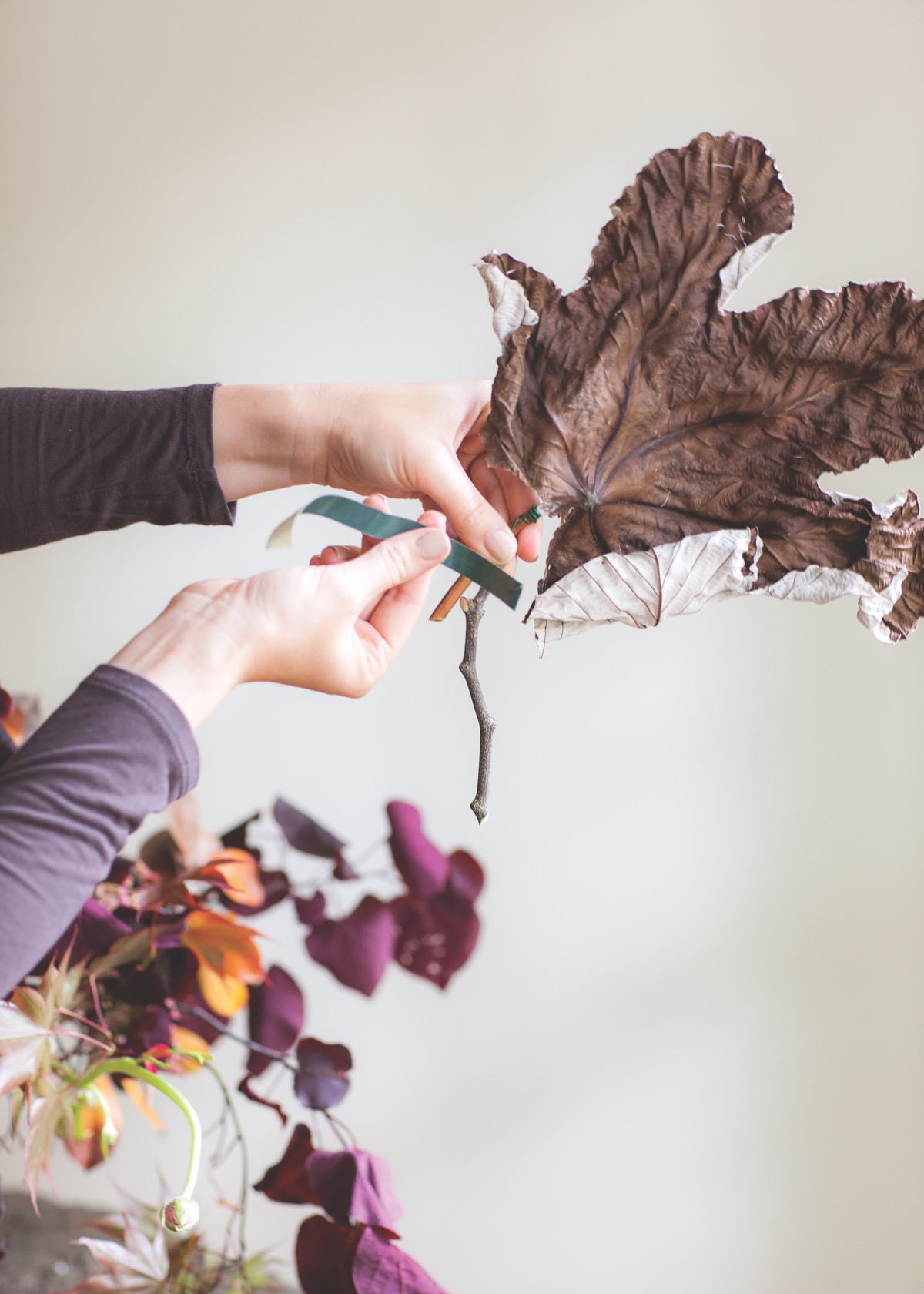
9
With the extended stem, place the leaf exactly where you want it to go.
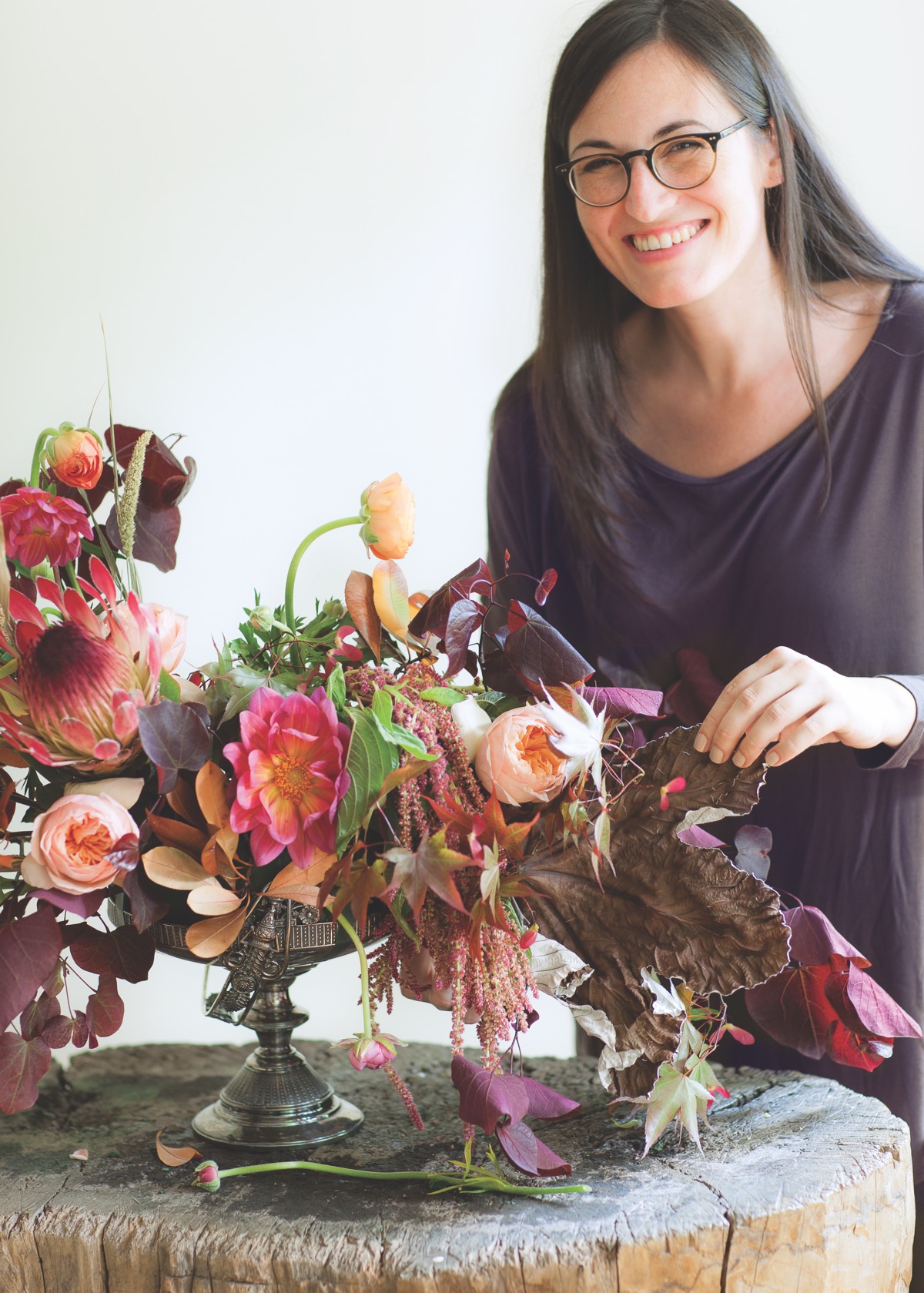
10
Finally, add the lime-green ranunculus. I knew they were the lightest and brightest and would catch the most attention, so I saved them for last in order to place them carefully.

“I had a lot of fun making this arrangement! It’s a very spontaneous, girly, and playful piece. I think it’d be perfect for a really eclectic restaurant with dark wooden tables, fiery plaster walls, loud live music, and good drinks.” —Joy Thigpen

Note: A floral foam alternative we did not mention in our Mechanics Makeover is Agra Wool, a natural, sustainable product intended to replace floral foam. While it is not widely available in the U.S.—and Flower magazine has not tested it—you can learn more and order it stateside from New Age Floral.
Floral design by Joy Thigpen | Produced by Abby Waller | Photography by Erica George Dines
